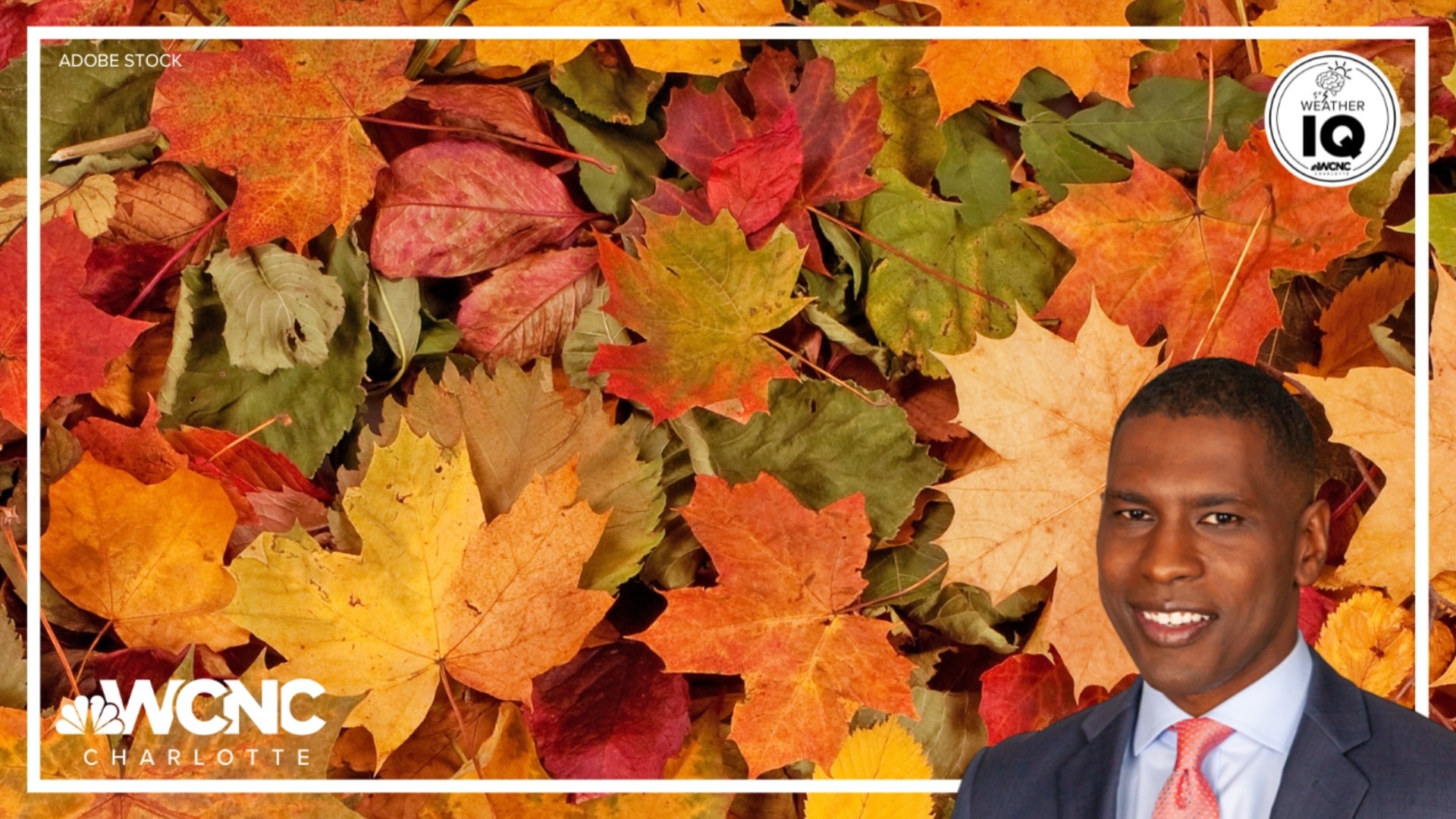CHARLOTTE, N.C. — We look forward to the leaves changing to the beautiful fall colors each year, but what causes them to change from green to yellow, orange and red?
Chlorophyll and pigments
Leaves are green in color because they contain chlorophyll. As the growing season comes to an end in the fall, leaves gradually lose chlorophyll production and other pigments become more active. The pigments determine which color the leaf will turn. Whereas the presence of a different pigment may make the leaf more red, more orange, or more yellow.
In some plants, the changing color of its leaves is quite uniform and the entire tree will appear in the same color. However, in some other plants, the colors may vary widely from leaf to leaf.
Each species of plant is unique and color changes are typically gradual. The right weather can intensify, or dampen, fall colors.
Weather determines timing
Every tree species has its own unique biological needs. For instance, too much, or not enough, of any particular need can change the timing of the coloring process. Trees need their right mixture of sun, wind or rain to reach prime color changes.
Some years, strong winds, such as those from severe weather or tropical storms and hurricanes, can knock leaves off the trees before the fall colors arrive.
For the latest weather alerts, download the WCNC Charlotte mobile app and enable push notifications.
From the mountains to the coast, peak leaf changes happen at different times: starting first in the higher elevations where colder temperatures arrive first. Over the following weeks, the changing color typically moves into lower elevations as temperatures begin to cool there.
For the Carolinas, those changes typically begin during early October in the mountains. Charlotte and the rest of the Piedmont typically reach peak fall foliage in early November.
Climate change impact
As global weather changes are making the summer season feel hotter and longer, the start of fall colors is being impacted, according to studies including one from Climate Central. The delayed annual arrival of cooler temperatures means trees continue to make chlorophyll, and thus stay green longer, into the typically-fall months.
Contact KJ Jacobs at kjacobs3@wcnc.com and follow him on Facebook, X and Instagram.
WCNC Charlotte’s Weather IQ YouTube channel gives detailed explainers from the WCNC Charlotte meteorologists to help you learn and understand weather, climate and science. Watch previous stories where you can raise your Weather IQ in the YouTube playlist below and subscribe to get updated when new videos are uploaded.

